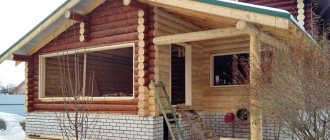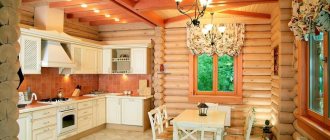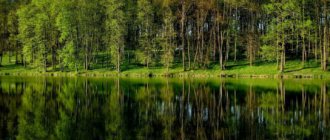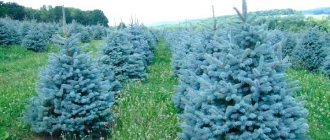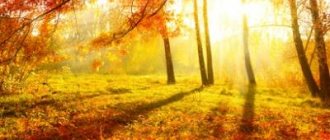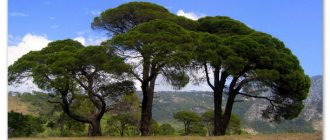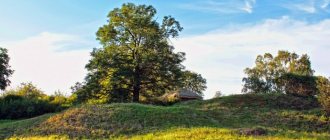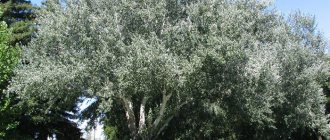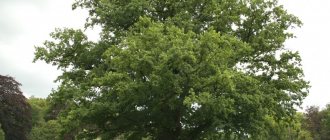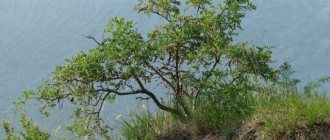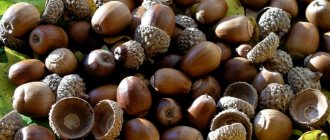Beech (lat. Fagus) is a genus of deciduous plants from the Beech family. Most representatives are distinguished by their majestic appearance, massive tall trunks, and decorative crowns. It is believed that these trees concentrate beneficial energy and maintain a person’s emotional and physiological balance. Beeches have medicinal properties . Their greenery, bark, and wood contain biologically active substances that normalize the functioning of the body.
Botanical description
Most beech species are distinguished by columnar, tall, powerful trunks up to 2 m thick. During their life, many trees grow up to 35–40 m. The root system is widely branched, with several anchor roots penetrating to great depths. There are no central rods . Old trees have developed root claws, giving them a stumpy appearance; there are grooves and hollows in the lower parts of the trunks. The bark of beech trees is light gray and quite smooth.
In the first 100 years of life, trees stretch upward, then begin to expand in width . Slender straight trunks are crowned with tent-shaped spreading crowns. In areas of dense thickets, the lower shoots are drowned out by the more developed upper shoots, deprived of sunlight, and gradually die off. Therefore, the green part of the trees in forests is located at a high altitude from the ground. Solitary plants are more picturesque.
The buds are elongated and appear on shoots at the end of January and February . The leaves are dark green, alternate, arranged in two rows, and quite large. They have an elliptical shape, pointed tops, and wavy or finely toothed edges. The front part is smooth with pronounced feathery veins, the back part is slightly pubescent. In autumn, the greenery takes on a beautiful golden or bronze hue.
The trees are monoecious . Male and female small axillary flowers are collected in small earring-shaped inflorescences, blooming in the spring simultaneously with the leaves. The fruits are brown triangular nuts about 1.5 cm in size. Each of them contains 2 seeds.
Properties of wood
Fresh beech cut
The texture of the wood is thin, the color of the core is reddish-brown, pale beige or pink-red, depending on the place of growth. The wood is heavy, durable, and can withstand bending well.
Wood of all types of beech has one significant drawback - it is very susceptible to rotting. Cut beech absorbs moisture very strongly and begins to mold
Therefore, it is very important to put it into processing almost immediately after harvesting. You need to dry it gradually, otherwise it will warp and crack.
Beech wood is most often used indoors. For outdoor use, it is subjected to special treatment, which increases its resistance to moisture and other adverse factors. After steaming, beech not only bends better, but is also easier to process.
Kinds
There are about ten varieties in total. The most common of them:
- European beech (lat. Fagus sylvatica). A large tree up to 40 m high. It has a dense wide crown and ovate dark green leaves. Distributed in Western and Central Europe.
- Large-leaved beech (lat. Fagus grandifolia). The leaves are elongated, with wavy edges. The crown is large, cylindrical. Natural range - North America.
- Eastern or Caucasian beech (lat. Fagus orientalis). Powerful trees about 35–40 m high with tent-shaped crowns. The leaves are elongated, oval-shaped, with sparse teeth along the edges. They grow on the Black Sea coast.
- Japanese beech (lat. Fagus japonica). Less tall appearance. Distributed in the Far East, reaches a height of 20 m. The trunks are multiply branched, the leaves are elliptical, pointed, dark green.
How to care for beech
Beech has high shade tolerance and grows in both partial shade and sun. This tree is heat-loving, especially its decorative forms, so in areas of harsh climates you should choose protected places for planting. Beech loves moist air and does not tolerate drought well, so it needs watering. But it is undemanding to the soil: it grows on wet and dry, somewhat fertile soils, both slightly acidic and alkaline.
It prefers loam and the presence of lime, so it is useful, according to DachaDecor.ru, to carry out liming. For good growth, the soil is fertilized; more details can be found in the material on mineral fertilizers. Very sensitive to pollution and salinity.
Place of growth
Most species live in the temperate climate zone of North America and Eurasia. Distributed everywhere in areas up to 2500 m above sea level. Prefer fertile soils . Beeches dominate in mixed and deciduous forests. Thick dark tree crowns shade low trees and shrubs. Usually, only a perennial grass substrate can be found near the trunks.
Trees are insensitive to lack of lighting and love moist, warm air. They cannot tolerate cold winds, prolonged winter frosts, or polluted atmospheres.
General characteristics of beech trees
All listed species reproduce by layering and grafting. From the general variety, trees are distinguished by a group of certain characteristics. They are presented in detail below.
- Crown configuration: pyramidal, weeping, with very long (up to 5-6 m) central branches that fall down.
- According to the configuration of the crown and silhouettes of the leaf blades: the comb type is low-growing, with small, curved, deeply serrated leaves; sinuous type of dwarf growth, has sinuous spreading branches, drooping at the corners, with small leaves; snail-shaped type - dwarf growth, leaves spoon-shaped concave.
- According to the size of the leaves and their outline: oak-leaved, coarse-toothed, round-leaved, split-leaved, fern-leaved, broad-leaved.
- According to the crown configuration and leaf color: purple-weeping, golden-weeping.
- According to the shape and color of the leaves: Rogan with pinnately lobed, purple leaves; Ansorgha - with purple, incised leaves; largeleaf purple - with large, glossy, dark purple leaves, very beautiful.
- According to the color of the leaves: white-variegated, golden, marbled, with spotted white-green leaves, golden-edged, pink-edged, striped (yellow and green stripes), tricolor (white, green, pink veins), dark purple (color lasts all summer).
Landing
Beeches prefer loose, neutral, slightly acidic or alkaline soils. Highly saline soils are not suitable for them. For planting, you should choose areas protected from the wind. It is recommended to add lime additives to the soil.
It is better to plant trees in the middle climate in early April, before the active growing season. Autumn plantings may not have time to take root before severe cold weather.
The holes are prepared with a depth and width of about 80 cm. When creating group plantings, a distance of about 1.5 m is left between plants. A drainage layer of small stones is laid at the bottom. After placing the seedlings, the soil is lightly compacted and watered abundantly. It is advisable to cover the tree trunk areas with a layer of moss, grass or mulch with peat.
Where is beech used?
Beech is a tree that lends itself well to cutting and shaping. Therefore, it is the most valuable plant when creating high hedges and green walls, which look very impressive. Recreation areas are created under the beech tree, thanks to its ability to provide dense shade. Different varieties of beech with beautiful leaf colors are used to create compositions with other deciduous trees, as well as with coniferous trees.
Beech wood is used in the manufacture of musical instruments, furniture and other products.
Care
The first fertilizing is carried out during planting. Equal parts of nitrogen and potassium-phosphorus fertilizers are added to the soil. In the future, it is necessary to provide the seedlings with organic matter and minerals. Every 3 weeks you can water the plants with a liquid solution of mullein.
Beeches are very sensitive to lack of moisture . It is recommended to water them during the first 2–3 years throughout the warm season: every 15 days at the rate of 15 liters of water per 1 tree. In hot summers it is useful to spray the crowns with a small watering can.
For the winter, the roots of young beeches are covered with a thick layer of sawdust and spruce branches. In frosty weather, the crowns are wrapped in burlap.
In the first few years, beeches grow very slowly. In the fourth year, they usually begin to quickly grow in height, up to half a meter per year. From this period you can start shaping haircut. Frosted branches are cut off annually in early spring.
The use of wood in landscape design
In the field of landscape design, culture is relevant when landscaping alleys and city park areas. Curly hedges that have an original look are often created from it. Planting is carried out either one at a time or in groups, forming an unusually attractive landscape of forest parks and parks.
Thanks to the very lush crown, light partial shade is formed, allowing you to place a bench or even a cozy gazebo to spend a great time and enjoy the coolness on hot days.
The tree's compacted foliage is ideal for planting in industrial parts of the city. It is very useful in this case, because it provides air, water, and protects the earth from erosion. Strong roots can supply the soil with minerals and organic elements that make it especially fertile.
There are crops that get along well with this vegetation - chestnut, spruce, pine, birch, oak, white fir, juniper, hornbeam and others.
Reproduction
Beech is propagated mainly vegetatively, using cuttings and branching off daughter shoots.
Planting material is taken from mature trees . Annual lateral branches are cut. The cuttings should be about 12–15 cm long and have several developed buds. The sections are treated with a growth stimulator and planted in boxes with a mixture of sand and garden soil. The soil is watered daily. The cuttings are kept under a film or glass cover for two weeks. Mineral fertilizers are periodically applied to the soil. The material is transferred to open ground after a year.
Daughter shoots often emerge from the root system of adult beech trees, which can be separated and transferred to a new location.
When propagating by layering, the young lower branches are tilted, a small circular cut is made in the bark, pinned to the ground, and sprinkled with soil. Before rooting, the cuttings are looked after by regular watering and feeding with nitrogenous fertilizers. After a year, the shoot should take root on its own.
Beech trees are propagated by professional breeders from seeds . Before sowing, the nuts are soaked in a warm solution of potassium permanganate, then deepened into the nutrient substrate. Contain seedlings at a temperature of 20 ° C, stable lighting. Seedlings are planted in open ground at the age of two years.
Application
Beech is valued on the farm not only as an energy amulet and medicinal raw material. Many cultivated species of this breed are widely used in landscape gardening. In this option, trees can be located in single or group plantings. Very often they represent individual green areas in forest parks, and are also an excellent material for creating hedges.
In many countries, the most important resort and aesthetic significance is assigned to beech forests. As a rule, it is in these areas that prestigious health institutions for children and adults are located.
Ecologists emphasize the role of beech trees in purifying the air and protecting the soil from erosion and weathering. According to experts, beech plantings contribute to the penetration of surface water runoff into deep soil layers.
Old trees are cut down to obtain valuable wood. It is widely used in carpentry, for the manufacture of furniture, musical instruments (guitars, violins), parquet, weaving parts, measuring equipment, gun stocks, and wooden containers.
We invite you to familiarize yourself with Homemade gutter
Did you know? English brewers even use beech to make the beloved Budweiser drink, adding wood chips during brewing.
- white or yellowish-red tonality, which over time turns into pinkish-brown;
- density;
- satisfactory moisture resistance;
- heaviness;
- tendency to deformation with high moisture;
- ease of processing and polishing;
- fragility in outdoor conditions.
Beech trees have also found their use in cooking. For example, acetic acid is made from their wood, and the nuts are used for desserts and baked goods. This raw material is also the basis for the production of tar, methyl alcohol and creosote oils.
Note that, based on the rich vitamin and mineral composition of beech fruits, in places where there are many of these trees, local residents traditionally prepare pancakes, pancakes and shortbread cookies from nut flour. And in the Caucasus and in the Carpathian regions, this ingredient is used for all bakery products.
The most valuable oil is obtained from beech fruits, which is widely used for food purposes (in taste it is not much inferior to Provencal oil), as well as in cosmetology. It is added to various masks as a nourishing ingredient for hair, face and skin. Depending on the manufacturing technology, beech oil of technical types is used for feeding livestock and as a coffee surrogate.
The raw material for beech oil is plane trees (beech nuts)
Important! Beech therapy is strictly contraindicated for people prone to allergic reactions, as well as with individual intolerance to the constituent components. Therefore, experts advise conducting a test before using any plant raw materials for food or cosmetic purposes.
To do this, simply apply a small amount of the drug to an area with sensitive skin.
And for those who love forest walks, bioenergeticists advise finding a young and strong tree, leaning your back against it and mentally “merging” with it into a single whole. Such practices give a boost of strength and health.
Pests and diseases
Representatives of beech trees are often affected by aphids, scale insects, mole crickets, red-tailed caterpillars, moth moths, and forktail moths. When they appear, the shoots become eaten away, the leaves curl, darken, and become covered with spots.
Beeches are also affected by root rot, powdery mildew, ascomycetes, chaga and hundreds of other fungal diseases. The fact that a lesion has occurred is indicated by strange-looking dark growths or deep cracks on the bark and leaves covered with a whitish coating.
For treatment and prevention, plants must be treated with fungicides several times a season: “Coronette”, “Antrakol”, “Alyette”. To combat insects, insecticides are used: “Aktaru”, “Provado”, “Calypso”.
Grade of beech lumber in accordance with GOST
The grade of beech lumber is determined by the presence and degree of manifestation of the following defects and processing defects:
- Dimensional accuracy;
- Humidity;
- Rot;
- Cracks;
- Knots;
- Mold damage;
- Breakouts, etc.
First grade (Grade A)
Does not allow:
- fused healthy knots with a diameter of more than 1 cm; knots on faces more than 10 cm wide; knots on the edges (more than 1/3 of the thickness for a single and paired knot), as well as more than 20 partially fused and unfused knots;
- falling out and rotten knots, cracks, porosity, mushroom spots and rot;
- acute wane
Allows:
- individual stripes and spots of mold and fungal stains on the sapwood;
- mechanical damage and processing defects within 5 mm;
- slope of the cut within 5% of the thickness and width of the lumber;
- blunt wane (up to 1/5 of the width of the lumber);
- longitudinal winging of the face and edge (up to 0.5% of the length);
- transverse winging (up to 1% of the width of the lumber).
Second grade (Grade B)
Does not allow:
- fused healthy knots with a diameter of more than 2 cm; knots on faces more than 20 cm wide; knots on the edges (more than 1/2 thickness for single and paired knots), as well as more than 40 partially fused and unfused knots;
- falling out and rotten knots, cracks, porosity, mushroom spots and rot - more than 10 pcs.;
- sharp wane more than ¼ of the width of the edge.
Allows:
- mold damage;
- wormholes (but no more than 3);
- mechanical damage and processing defects within 5 mm;
- slope of the cut within 5% of the thickness and width of the lumber;
- blunt wane (up to 1/3 of the width of the lumber);
- longitudinal winging of the face and edge (up to 1% of the length);
- transverse winging (up to 2% of the width of the lumber).
Does not allow:
- fused healthy knots with a diameter of more than 5 cm; knots on faces more than 50 cm wide; partially fused and unfused knots more than 30 pieces;
- falling out and rotten knots, cracks, porosity, mushroom spots and rot - more than 25 pcs.;
- sharp wane more than 1/2 of the width of the edge.
Allows:
- knots on the edges;
- mold damage;
- wormholes (no more than 5);
- mechanical damage, processing defects and minor deformations;
- slope of the cut within 5% of the thickness and width of the lumber;
- blunt wane (up to 1/2 of the width of the lumber);
- longitudinal winging of the face and edge (up to 2% of the length);
- transverse winging (up to 3% of the width of the lumber).
Usage
Beech trees are used in landscaping parks, squares, gardens, suburban areas, and city streets. They are planted on slopes and along river banks. The dense greenery of trees actively produces oxygen, absorbs carbon dioxide, and creates a healthy microclimate in the places where they grow. Due to their low frost resistance (beeches freeze out at temperatures below -20 °C), difficulties arise when cultivating them in northern regions and sharply continental climates.
Use of wood
Beech wood is uniformly dense, tough, durable, and has a color ranging from almost white, beige and light pink to red, with a beautiful contrasting pattern. Before use, it is steamed to achieve an even shade. The density after drying is about 750 kg/m3. In terms of hardness, beech resembles oak, bends well, and can be processed. At the same time, the material is very capricious, warps easily, swells at high humidity, and is susceptible to fungal attack.
Used for the production of composite building and finishing materials, including fiberboard, parquet, veneer, and plywood. Furniture parts, containers, decorative kitchen utensils, picture frames and panels are cut from beech. Wood waste is used as fuel and for the production of cellulose.
Use in medicine
All parts of the tree contain volatile essential oils, organic acids, and tannins. Alkaloids and fatty oil were found in the seeds. From dried leaves and crushed bark, products are made to reduce sugar, blood cholesterol levels, treat diseases of the respiratory tract, liver, gall bladder, inflammatory pathologies of the joints, improve body tone, improve blood circulation, eliminate nervous system disorders, and heal wounds.
Beech nut oil is used in cosmetology, adding to lotions, face masks, creams, and hair care products.
Seasonal colors
The composition “Seasons” is considered a harmonious combination of shades.
"Spring". Yellow acts as the main tone. Complement it with other shades - a fresh mix of white, pink, beige, red, green, blue and purple.
"Summer". Here the base is blue, the palette also includes white, brown, yellow, blue, black, beige, green, purple and gray.
"Autumn". Red is used as the main tone, and blue, purple, pink, gray, white, yellow, brown, and black are additionally used.
"Winter". Blue is the main color in the interior. It is recommended to decorate with black, red, yellow, white, brown, purple, pink and gray.
Choose a color scheme to your taste that will transform the interior.
Which variety should you choose?
The variety of willow species is great, most representatives of this genus look like short trees or shrubs, and some species grow up to 15-20 m. There are also super-tall willows that can grow up to 40 m, and their trunk diameter is at least half a meter. Hybrid interspecific variants are also often found. In Russia, especially in its European part, willow is widespread; people call it broom, willow, willow, willow, willow or shelyuga. Shrub species can most often be found in Siberia and the Urals, and willow is also common in Central Asia. The wide range is explained by the fact that the plant is unpretentious to soil composition; it grows well on loamy substrates and light soil mixtures rich in organic matter. For willow, the proximity of groundwater does not matter; it tolerates such proximity well.
Traditionally, willows are planted in parks and squares near water bodies; this plant is used to strengthen coastal slopes and to create an attractive landscape design. The silver and weeping willows look especially impressive, descending their thin and flexible branches to the very edge of the water. An example of this type is a species called goat willow. In this case, the “Tent” variety will look no less attractive. Such plants will decorate not only the edge of reservoirs, but also any open area of the garden, and the spreading crowns of openwork branches will provide excellent protection from the summer sun.
If you plant willows in 2 rows, you will get a kind of shady alley. For such plantings, you can use Ural sinuous or Matsuda willow. When arranging an alley, flexible branches of plants can be intertwined with each other, forming living arches from them - this design looks unusual and attractive, however, shoots can only be braided from plants that are already 3-4 years old, because the arches should be at a distance of 3-3, 5 m from ground level. If there is not enough space in the garden to form an alley or arch, it can be made from two small willow trees, connecting their crowns to each other. To grow shoots together and give them an impetus to grow, the ablactation method is used, when special grafting is done on the branches.
To decorate rocky gardens of rockeries, alpine hills or ordinary flower beds, low-growing shrubs or low standard trees are used. For this purpose, you can use willow varieties such as Swiss, Babylonian, Fantasy, and Golden Sunshine.
Often, plants of the willow genus are planted at short intervals from each other in order to create a hedge. The tortuous, purple, and Caspian varieties are well suited for these purposes. Abundant shoots of these shrubs can decorate free space and protect other plants from the scorching sun. Willow bushes look original if they are planted sequentially along the garden path. A bold design decision would be to place decorative sculptures or small fountains near plantings.
If you want to decorate a spacious lawn, then in its center you can plant a spreading brittle willow, whose crown will look like a dome. At the foot of this tree, which will eventually become tall, you can place flower plantings in a color scheme that harmonizes with the color of the willow foliage.
Fruit
These are triangular nuts about one and a half centimeters long, the shell of which is covered with soft short needles on the outside. The main part of the nuts, as well as the young shoots of trees, are eaten by forest inhabitants - animals and birds. Throughout the beech growing area, local residents use fried kernels for food. Oil is squeezed out of them, and the cake is brewed as a drink, somewhat reminiscent of coffee in taste. Nuts ground into flour are used for baking. It is interesting that, according to popular belief, the larger the harvest of nuts on the beech tree, the harsher the winter ahead.
